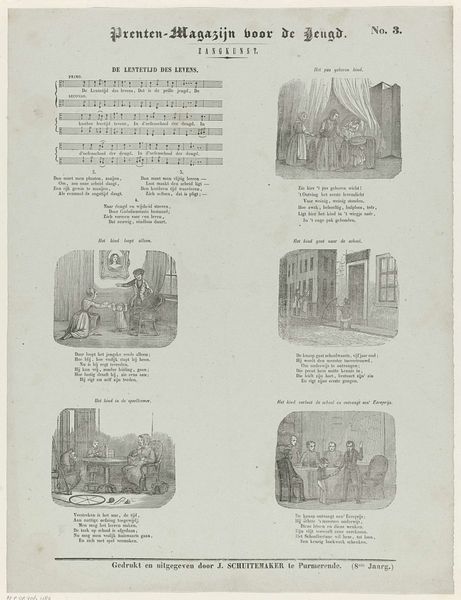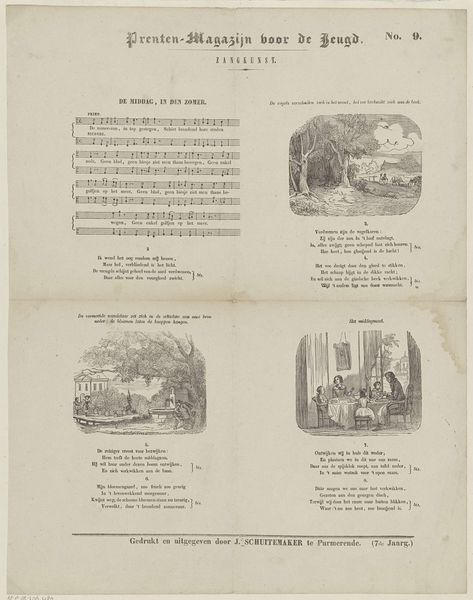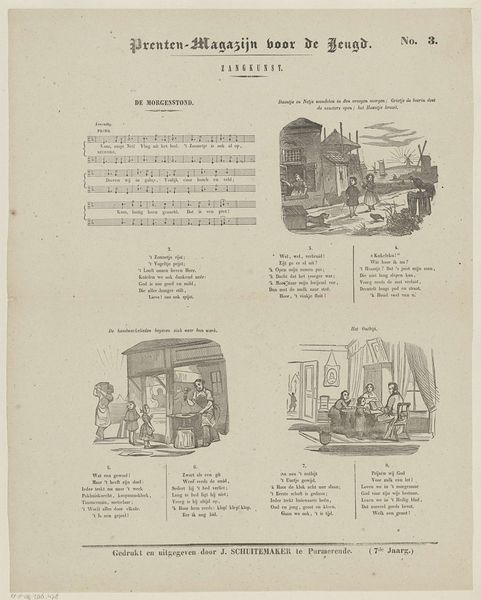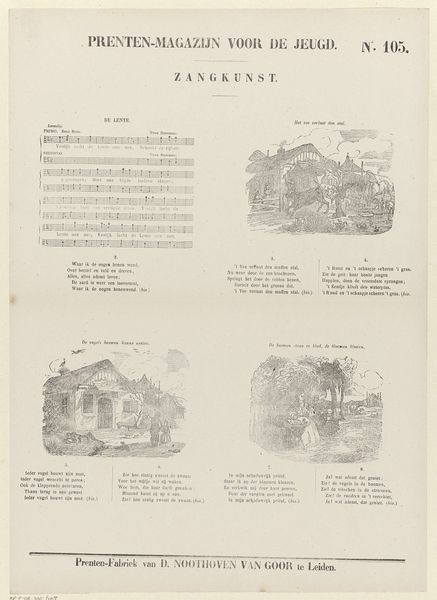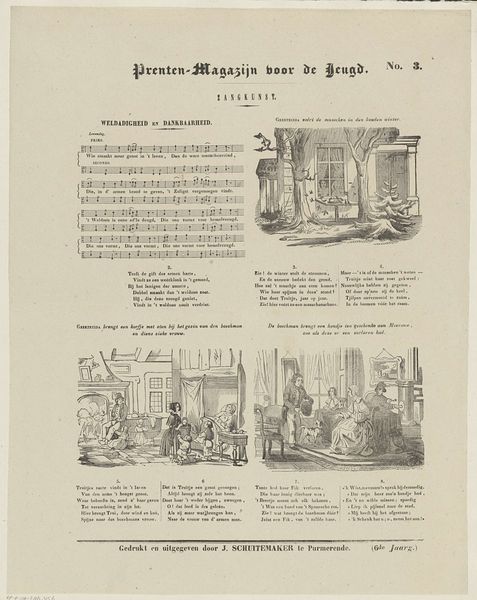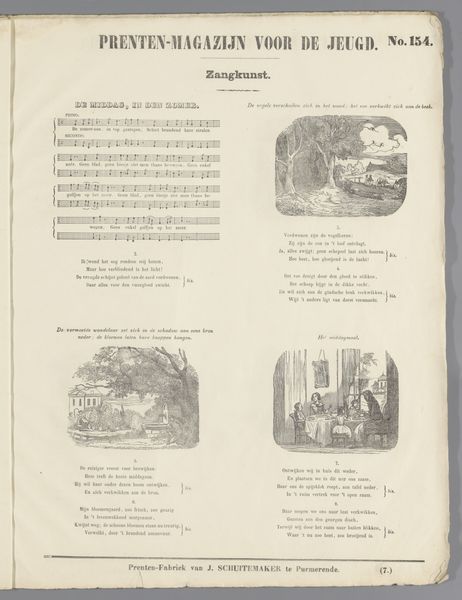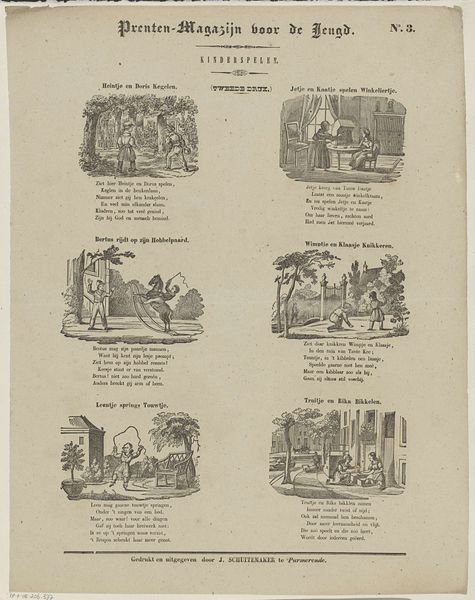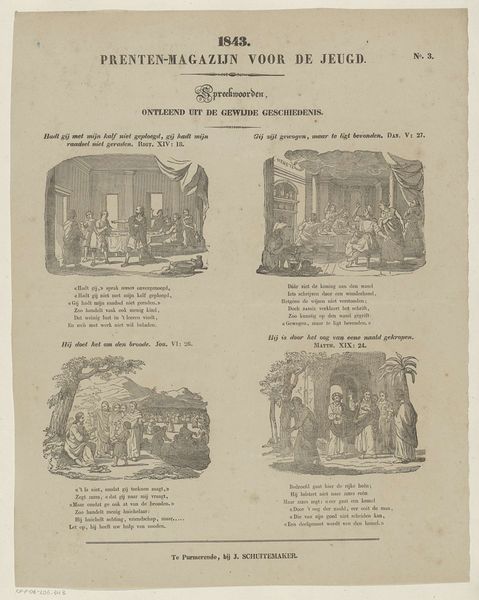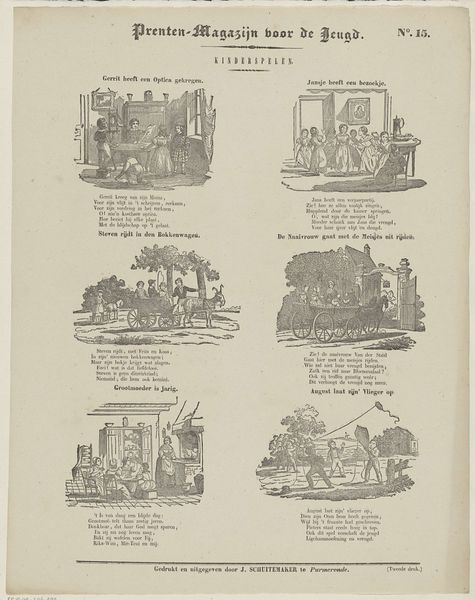
Dimensions: height 423 mm, width 335 mm
Copyright: Rijks Museum: Open Domain
Curator: This print, titled "Weldadigheid en Dankbaarheid," or "Charity and Gratitude" in English, dates from around 1850-1881 and comes from the workshop of D. Noothoven van Goor. It seems to be an engraving, likely for a publication. What's your initial take on it? Editor: A series of little scenes. Almost like vignettes telling a sequential story. It has a very… moralizing mood? Definitely gives off "children's book" vibes, didactic and probably intended to uplift. It's incredibly detailed, look at the engraving on the various scenes! Curator: It does appear to be page from a "Prenten-Magazijn Voor De Jeugd", a Magazine for Youth, with a music snippet along the left margin—further clues to this era’s didactic efforts through material culture. It points toward intended audience & mode of consumption of prints then! I also note Noothoven Van Goor, as a printer, was invested in mass dissemination. Editor: So, it’s designed as both entertainment and moral instruction, targeting families who could afford printed materials for their kids. How interesting, seeing the social commentary in depictions of charity. It is all well organized in sequential panes. But that stark monochrome hits you in a specific way. Curator: Monochrome prints like this are intrinsically tied to industrial print methods during that time—think cost-effectiveness—while, it visually reinforces binary, moral tones: Lightness and dark, virtue and vice, rich and poor. I can almost feel the process—metal plate etching, industrial press runs and even hear conversations on "virtue" across generations within domestic interior space! Editor: Yes! A visual aid almost for Victorian era, very much presentational styles and how you may want children to see "poor people" as part of social reality outside privilege households—there is also sort of "noble-victimness" though that some are presenting that those receiving the charitable donations! How do we negotiate those complexities? Curator: Such illustrations offered carefully managed depictions, and reflect bourgeois societal structure in full spectrum, presenting children with acceptable social frameworks to perpetuate throughout maturity; such framework and dissemination mechanism makes one aware that consumption happens under specific instruction protocols to follow specific societal role from one and onwards. Editor: Reflecting on "Gratitude and Benevolence" it is striking just how resonant and haunting, in their own way are they—though I cannot escape that very rigid-ed instructional feel they convey on its consumers; a chilling glimpse indeed, perhaps the purpose was far wider afterall in its aims on moralistic views!.
Comments
No comments
Be the first to comment and join the conversation on the ultimate creative platform.
